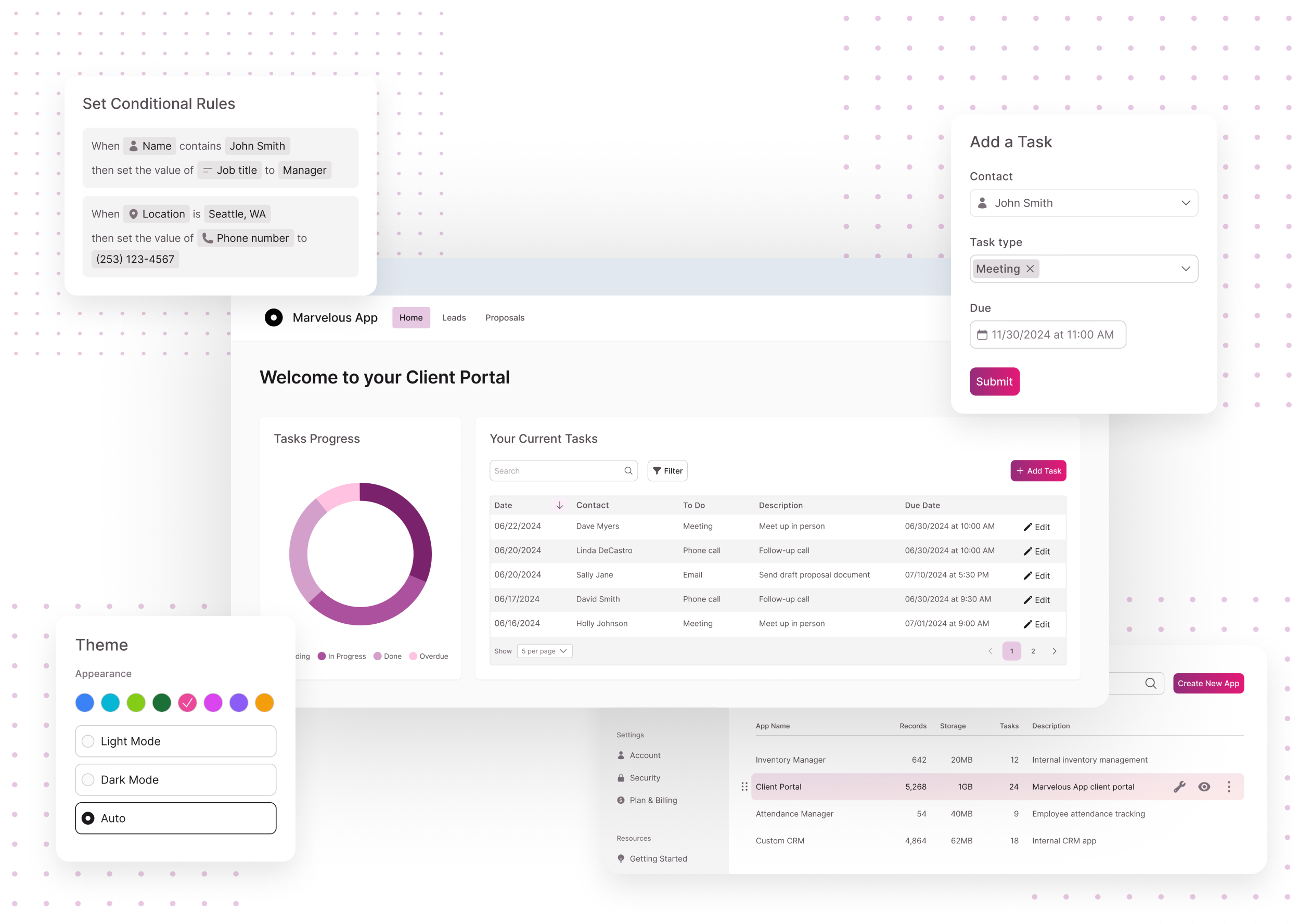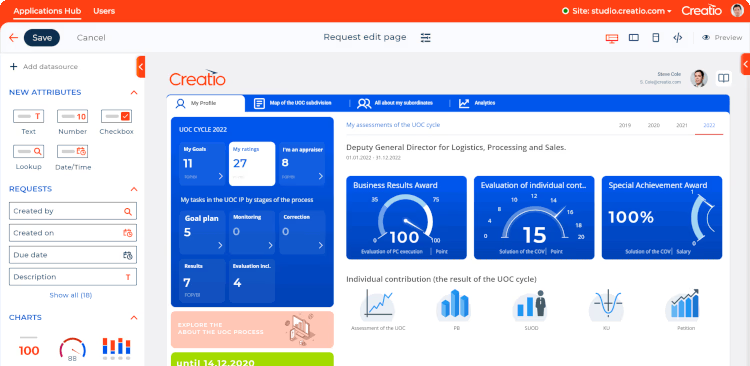Exploring the Benefits of Scalable Data Sources That Need No Coding Skills for Effective Data Administration Solutions
The introduction of scalable data sources that remove the requirement for coding skills presents a transformative chance for companies seeking efficient information administration remedies. As we consider the effects of such developments, it ends up being crucial to take a look at how they can improve the landscape of data monitoring and drive lasting growth in a competitive environment.
Boosted Availability for Customers
Improved availability for individuals is a crucial element of scalable data sources, ensuring that information monitoring systems are instinctive and easy to use. In an era where data-driven choices are vital, access allows a wider series of individuals, including those without comprehensive technical experience, to engage with data source systems successfully. This democratization of information accessibility facilitates boosted collaboration across divisions, encouraging workers to extract insights and make notified decisions.
User-friendly user interfaces, such as aesthetic data and drag-and-drop features depiction, simplify complex information interactions. These improvements decrease the learning curve associated with standard data source monitoring, making it possible for individuals to concentrate on leveraging information instead than coming to grips with technical complexities. Furthermore, scalable data sources usually incorporate real-time analytics and customizable control panels, offering users with immediate understandings tailored to their details needs.

Cost-Effectiveness and Source Savings
Reliable data monitoring not just pivots on ease of access but likewise on cost-effectiveness and resource savings. Scalable data sources made for individuals without any coding abilities substantially reduce financial problems normally connected with traditional data source management systems. By getting rid of the requirement for specialized programs competence, companies can designate their sources a lot more successfully, concentrating funds on core organization activities instead than considerable training or hiring knowledgeable employees.
Additionally, these data sources often use cloud-based solutions, which further decrease costs connected to hardware and upkeep. Organizations can scale their data source remedies according to their requirements, preventing the expenditures sustained from over-provisioning sources. This adaptability indicates businesses can adjust to changing demands without incurring unneeded costs, leading to significant long-term savings.
In addition, easy to use user interfaces streamline information entrance and management processes, lowering the moment spent on management jobs. This effectiveness translates into labor price savings, allowing teams to focus on calculated campaigns instead than regular maintenance. Generally, embracing scalable databases that require no coding skills cultivates an extra cost-effective strategy to information administration, making it possible for organizations to maximize their sources while maintaining high levels of operational performance.
Improved Cooperation Throughout Teams

In addition, scalable data sources promote smooth communication amongst group participants. With straightforward user interfaces that need no coding skills, workers can conveniently create, change, and share reports read the article or control panels tailored to their particular needs. This democratization of data empowers non-technical customers to contribute insights, improving the collective setting.
Additionally, these data sources support concurrent access, allowing numerous users to work on the exact same dataset simultaneously. This attribute boosts performance, as teams can engage in joint information analysis without the risk of variation control issues. The capacity to leave comments or notes straight within the database further advertises discussion and clears up data analyses.
Streamlined Data Monitoring Processes
In today's data-driven atmosphere, companies acknowledge the necessity of streamlined data management processes to make the most of performance and precision. By leveraging scalable databases that need no coding skills, services can streamline their data handling and minimize the complexities typically related to conventional data source systems. This availability equips non-technical individuals to involve directly with information, promoting quicker decision-making and reducing dependence on specialized IT workers.
Streamlined data administration procedures enhance operations by automating routine tasks such as information entry, validation, and reporting. Automated information combination guarantees that info from numerous sources is accumulated flawlessly, getting rid of silos and cultivating a combined view of critical organization metrics (no-code). In addition, straightforward user interfaces enable personnel to adjust data quickly, enabling them to generate understandings that drive calculated initiatives without the demand for extensive training.
This efficiency not just speeds up operational processes but additionally lessens the possibility for human error, guaranteeing that data stays accurate and reputable. Ultimately, streamlined data management processes with scalable databases result in enhanced efficiency, allowing companies to concentrate on core activities while making certain that their data management methods are efficient and efficient.
Scalability for Growing Organizations

For click reference broadening ventures, the capacity to scale up or down is essential. A scalable database can handle an influx of data generated from brand-new clients, products, or solutions, ensuring that company procedures stay uninterrupted. Furthermore, these databases give the capability to handle peak loads effectively, which is crucial during periods of quick development or seasonal spikes.
In addition, several scalable data source solutions are created with easy to use Related Site interfaces that require no coding skills, encouraging non-technical personnel to handle information efficiently (no-code). This democratization of information management permits organizations to assign sources strategically and reduce dependency on specialized IT workers
Eventually, adopting a scalable data source not just enhances operational performance yet additionally cultivates a setting where companies can develop and introduce without the restraints of conventional data source systems. This flexibility positions organizations for lasting success in today's affordable landscape.
Verdict
In conclusion, scalable databases that need no coding skills provide considerable advantages for reliable information administration. By enhancing information monitoring procedures and providing scalability for growing businesses, such services enable companies to adjust to altering needs successfully.
Boosted accessibility for individuals is an important aspect of scalable data sources, guaranteeing that data administration systems are instinctive and user-friendly.Straightforward user interfaces, such as visual data and drag-and-drop attributes depiction, simplify intricate information communications. Overall, taking on scalable databases that need no coding skills cultivates a much more economical technique to data administration, allowing organizations to maximize their resources while preserving high degrees of operational effectiveness.
By leveraging scalable databases that need no coding skills, businesses can streamline their data handling and minimize the complexities generally linked with standard data source systems - no-code.Structured information management processes boost operations by automating routine jobs such as data entrance, validation, and reporting